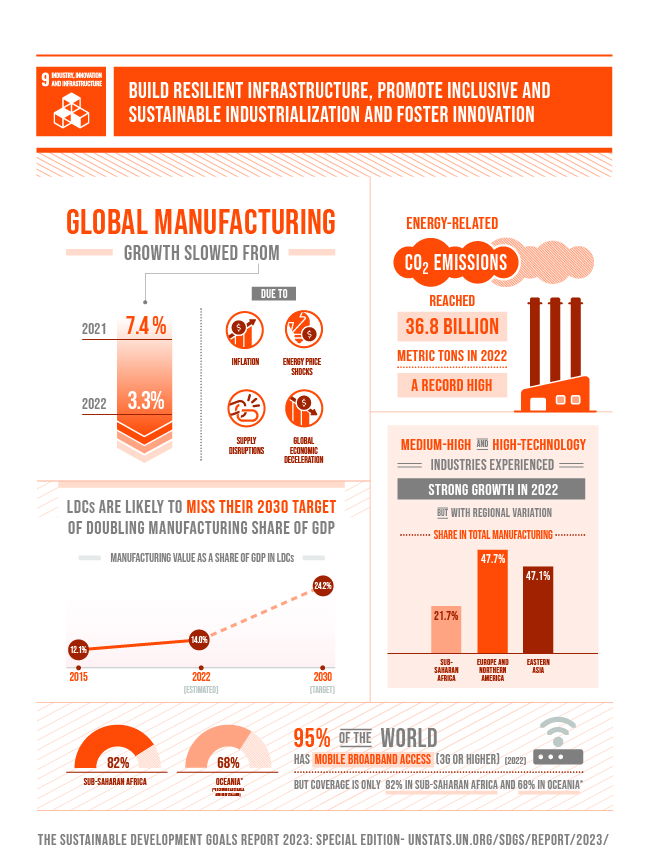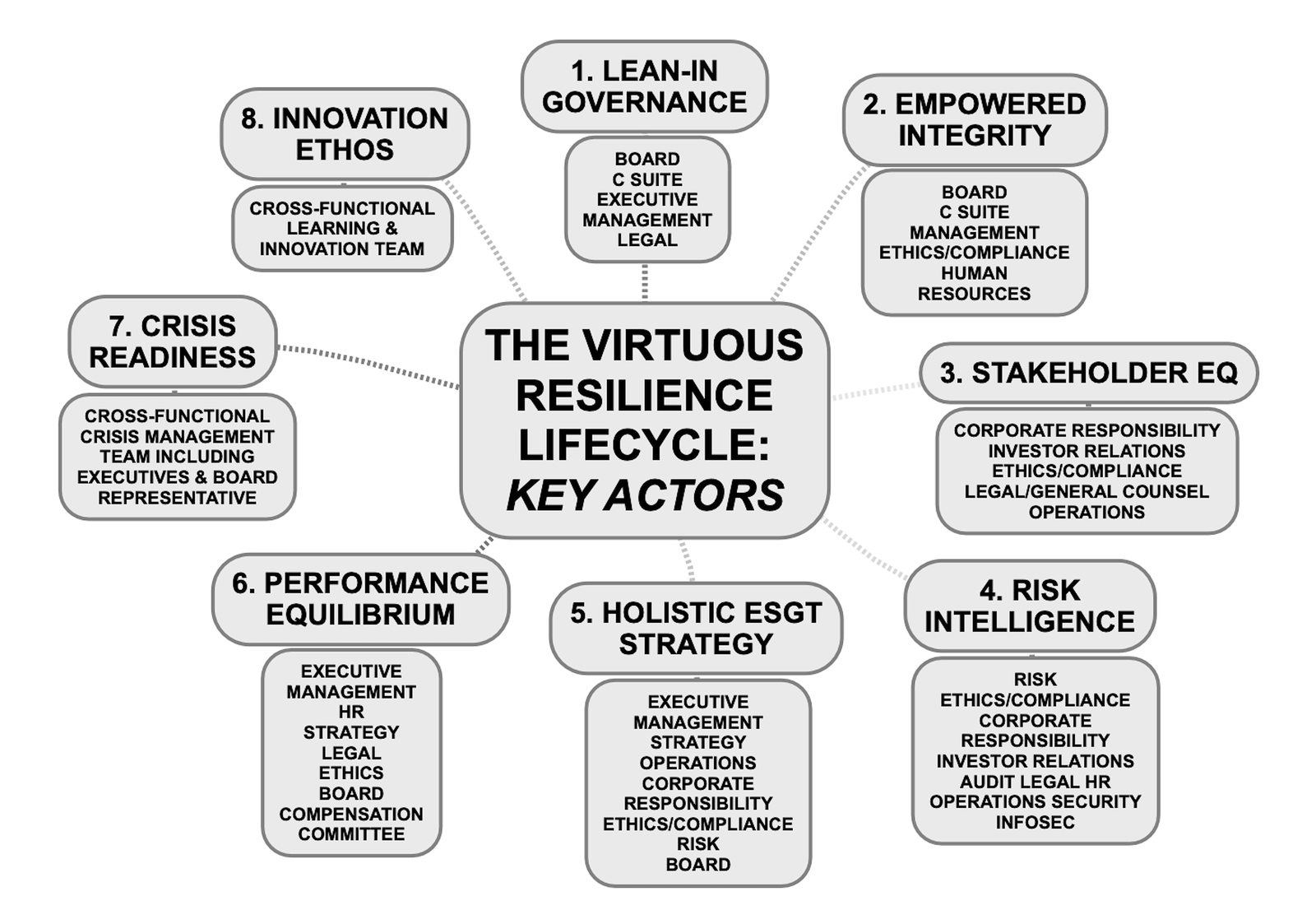Deploying SDG 9 despite the headwinds: a leadership blueprint to resilience in chaotic times


· 10 min read
The nexus between effective leadership, innovation and resilience, and progress on SDG 9 (which focuses on “industry, innovation and infrastructure”) could not be more important.
Why? Because we are living in turbulent times in which leaders must navigate a much more chaotic landscape than perhaps we have ever faced as a globe before because:
Add to those trends the opening up of Pandora’s box of tech innovation via the likes of generative AI (and in the future, quantum, and other technologies) and we have a turbocharged environment with deep, unexpected, and even existential risks. But we have the opposite as well: deep, unexpected, life-changing opportunities.
And that’s where SDG 9 comes in. Let’s turn to understanding where we are on this SDG first and then to some themes and actions that leaders should consider to accelerate progress against the 2030 SDGs.
Let’s start by level-setting on what Sustainable Development Goal 9 is - SDG 9 is known as “Industry, Innovation and Infrastructure”. Its longer definition is to “build resilient infrastructure, promote inclusive and sustainable industrialization, and foster innovation”. We will look at each of these elements below but first, let’s look at how the UN and other key players and partners measure progress on SDG #9.
As the Table below shows, SDG #9 consists of eight targets and 12 indicators associated with the targets. The first five targets are “outcome” targets and the next three are “implementation” targets.
Sustainable Development Goal 9: Industry, innovation, and infrastructure
| Eight targets | 12 indicators |
| Outcome targets | |
| 1. Develop sustainable resilient and inclusive infrastructures |
|
| 2. Promote inclusive and sustainable industrialization |
|
| 3. Increase access to financial services and markets |
|
| 4. Upgrade all industries and infrastructure for sustainability |
|
| 5. Enhance research and upgrade industrial technologies |
|
| Implementation targets | |
| 6. Facilitate sustainable infrastructure development for developing countries |
|
| 7. Support domestic technology development and industrial diversification |
|
| 8. Universal access to information and communications technology |
|
 Source: United Nations
Source: United Nations
In its 2023 SDG Report, the UN underscored the following key themes regarding SDG #9:
These 2022 outcomes show several significant takeaways from SDG 9 throughout this year:
The bottom line is this: there is a serious gap between where we are and where SDG 9 needs to be at this halfway point looking toward 2030.
The next section of this article provides some ideas on how business, government and social leaders can make progress on all things industry, innovation, and infrastructure over the next 6 years despite these heavy headwinds.
If we look at the three components of SDG 9 more closely, we can see that the UN and its partners mean it to be about more than just economic progress. Indeed, it is about:
Below I offer my take on things we can do as leaders – whether governmental, business, or social – to move forward on these goals in a time of turbulence:
This starts with leadership itself. In each of our businesses, in each of our social or communal organizations, at each of our political levels – local, state, regional, national, and international – we, as stakeholders, need to focus harder and faster on choosing the right people to lead us – people who:
Each business needs to understand that they are a technology company – whether they think they are or not – and act accordingly. To wit:
I will conclude with an exhortation to leaders of organizations – public, private, and social – to build inner organizational resilience. This means getting your own house in order to survive and thrive in our turbulent times. I have researched, written, and practiced extensively on this subject, and am pleased to offer the following model of the “Virtuous organizational resilience lifecycle” which contains 8 key components, one supporting the other, and the 3 most important and foundational ones being:
Below is a graphic from Gloom to Boom: How Leaders Transform Risk into Resilience and Value (Routledge 2020) that describes the Virtuous Resilience Lifecycle components and key actors that make it possible within an organization.

Source: Gloom to Boom: How Leaders Transform Risk into Resilience and Value (Routledge 2020)
Achieving the goals of SDG 9 by 2030 clearly presents a steep uphill challenge fraught with known and unknown global, regional, and local trends and megatrends, risks, and opportunities.
Just because something is difficult shouldn’t stop us from attacking it smartly, consistently, in a whole of society, all-hands-on-deck manner.
There will always be naysayers and bad players, but it always does take a global village to get important things done. Now more than ever. Those of us with our sleeves already rolled up should recruit others to act accordingly and march forward together post haste to save this planet, an action at a time, and many actions knitted together over time.
illuminem Voices is a democratic space presenting the thoughts and opinions of leading Sustainability & Energy writers, their opinions do not necessarily represent those of illuminem.
illuminem briefings

AI · Green Tech
illuminem briefings

Architecture · Corporate Governance
illuminem briefings

Public Governance · Corporate Governance
CNBC

AI · Corporate Governance
Financial Times

Green Tech · Corporate Governance
The Washington Post

Circularity · AI